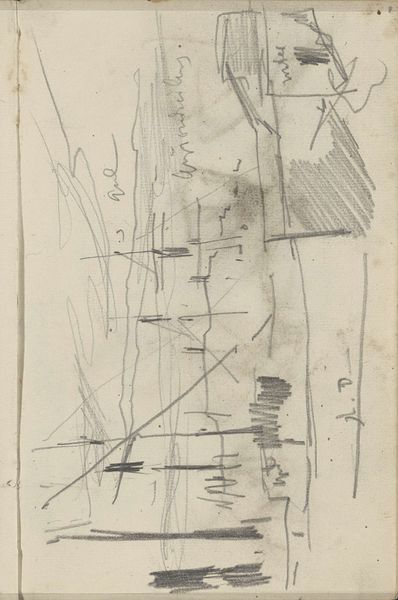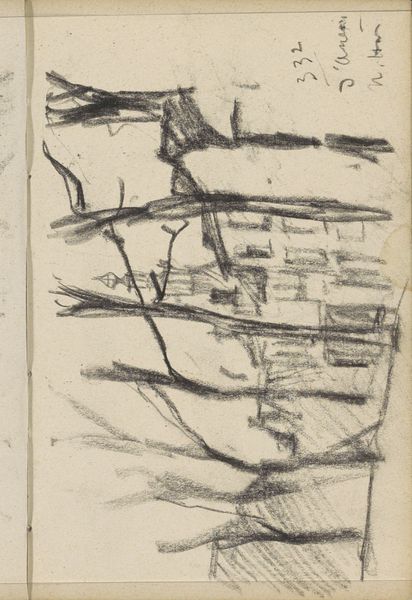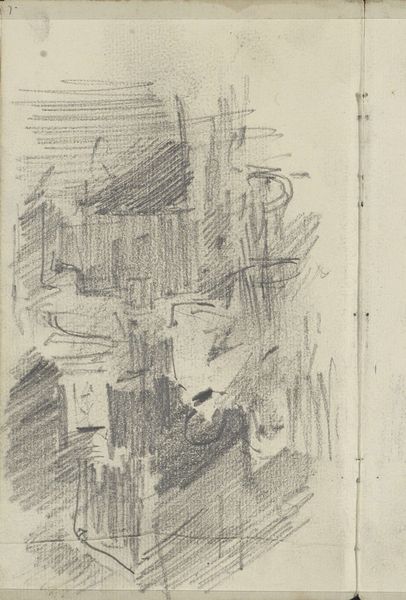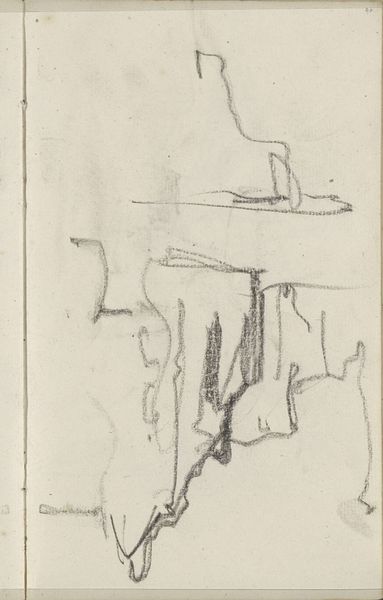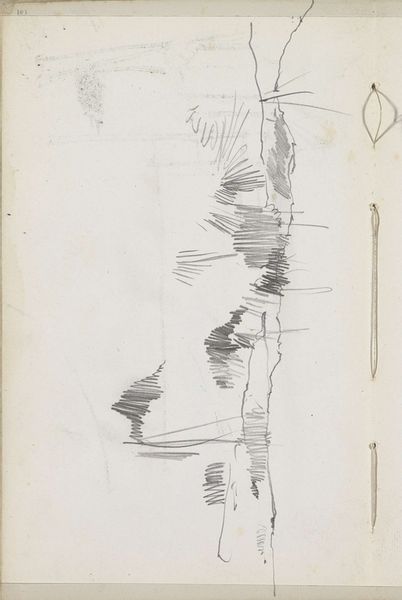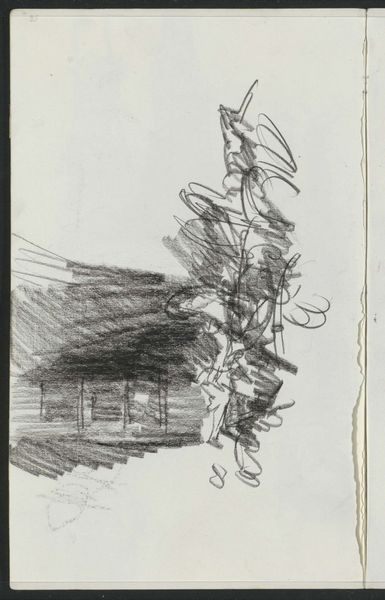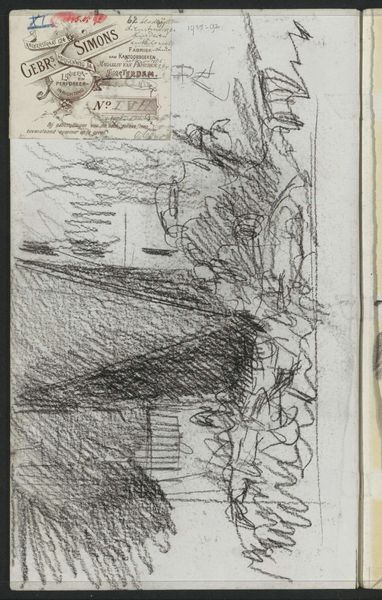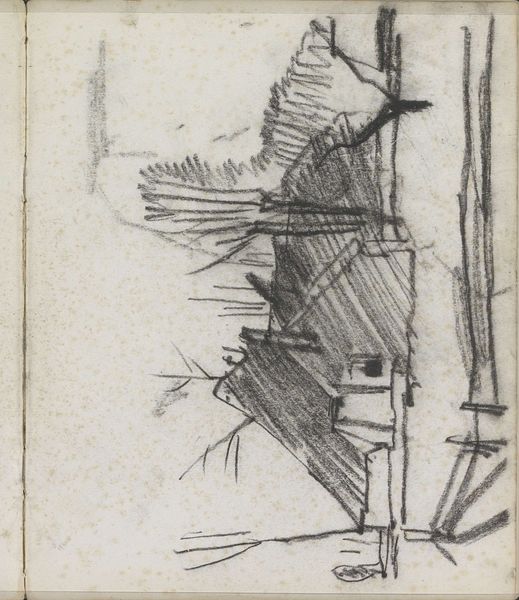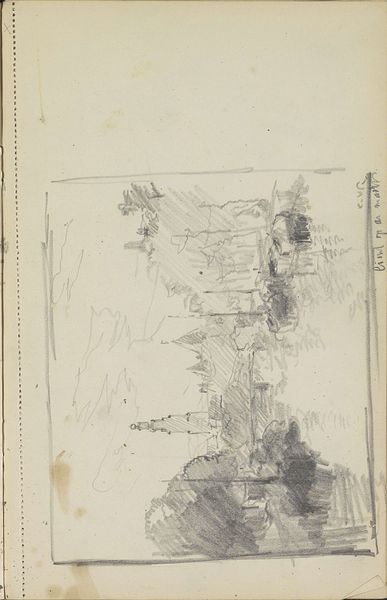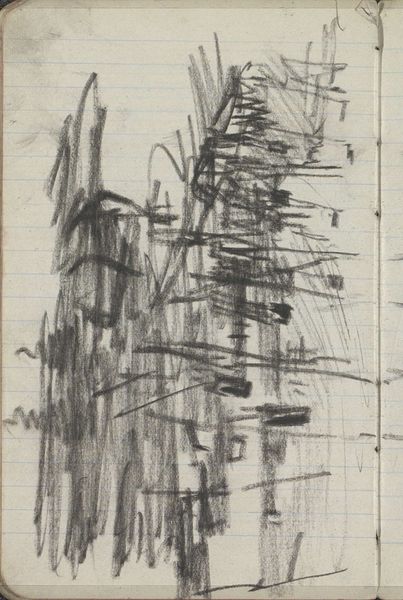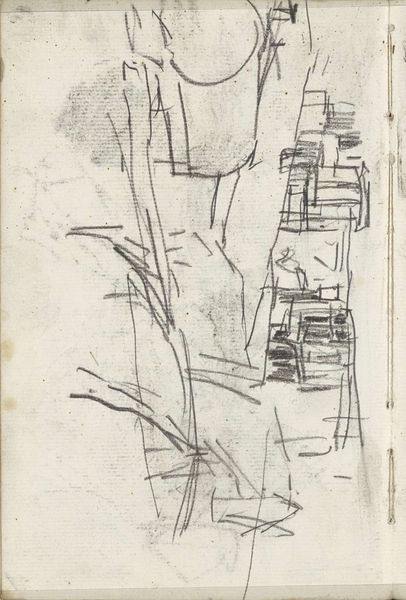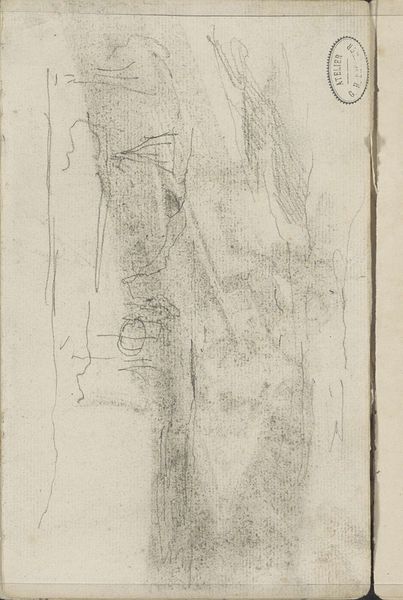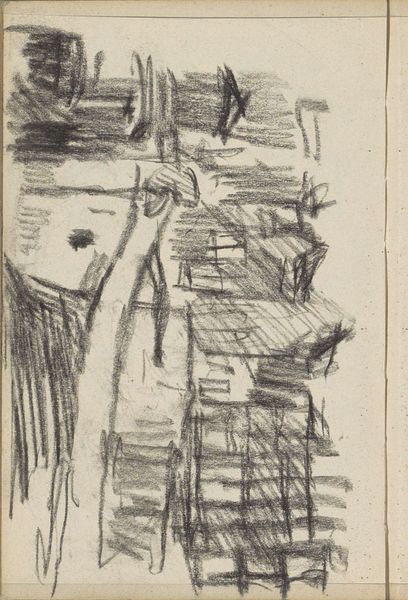
Copyright: Rijks Museum: Open Domain
Curator: Here we have George Hendrik Breitner’s, "Vrouw op het Rokin te Amsterdam," likely created between 1886 and 1898. It's rendered in graphite and ink, a quick sketch capturing a street scene. Editor: Wow, that is immediacy. It feels less like looking at a city, more like remembering one in a rush, charcoal and graphite blurring the line. Curator: Absolutely. Consider Breitner’s approach. He was intensely interested in representing modern, urban life, and used photography extensively to document the city and working classes, using these photos as direct reference material for his art. Editor: He almost weaponizes the blur! It makes me wonder what that woman's story is, just a transient form caught between building and light, you know? Is she hustling to a job, maybe exhausted at the end of her day? Curator: We have to be mindful of the conditions in which an artist is working: affordable drawing and photographic materials became readily available to artists in the late 19th century. We see an increase in urban studies that capture the lives of working women and this artwork stands as another product from it. The very materials used contribute to the sense of ephemeral documentation and record. Editor: And that sense of record really lingers in how minimal it feels; almost voyeuristic. I wonder, if I saw a print of this image, would the ink texture, its materiality, matter more? Curator: Definitely, considering that texture underscores the tangible labor, transforming observation into physical artifact and an immediate response. Also, how the economics of material impacts the art that comes out of it. Editor: It makes me appreciate its grittiness even more, all that compressed charcoal dust that once held movement, feeling—city grit turned into emotional depth. Curator: Yes. And through these means, he's engaging in very contemporary discussions of what it meant to work and live in that period. Editor: Beautiful! Even after all this time, his fleeting glimpse invites us to consider the bigger city portrait of labour and movement it conveys!
Comments
No comments
Be the first to comment and join the conversation on the ultimate creative platform.

